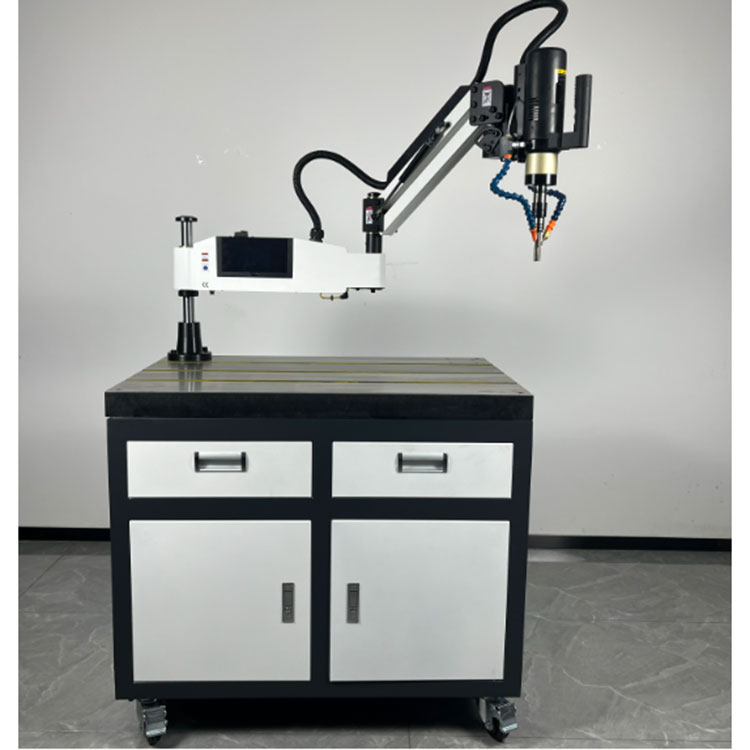Features and Components of High Precision Tapping Equipment
2024-06-25
High precision tapping equipment refers to specialized tools and machinery used in manufacturing and machining processes to create accurate threaded holes in various materials. Here’s a detailed overview:
Definition:
High precision tapping equipment is designed to perform tapping operations with exceptional accuracy and reliability. Tapping is the process of cutting internal threads into a hole, typically for fastening screws, bolts, or other threaded components.
Features and Components:
1. High Precision Drilling Capability:
- The equipment includes precision drills capable of creating starter holes with exact dimensions and alignment, crucial for accurate tapping.
2. Tapping Heads:
- These are attachments or integral parts of the equipment that hold the tap securely and guide it through the hole with precision. Tapping heads can be adjustable to accommodate different thread sizes and pitch requirements.
3. Spindle and Feed Mechanisms:
- High precision tapping machines are equipped with robust spindles and precise feed mechanisms to ensure consistent thread quality and depth control.
4. Control Systems:
- Modern tapping equipment may feature computer numerical control (CNC) systems or digital controls to automate and optimize tapping operations. These controls allow for programmable settings such as feed rates, depth of cut, and thread pitch adjustments.
5. Tool Changers:
- Some advanced systems include automatic tool changers that allow for quick and efficient switching between taps and drills, reducing downtime and increasing productivity.
6. Built-in Monitoring and Feedback Systems:
- To ensure quality and prevent errors, high precision tapping equipment may incorporate sensors or monitoring systems that provide real-time feedback on parameters like torque, thread pitch, and alignment.
Applications:
- Precision Machining: Used in industries where accuracy and reliability are critical, such as aerospace, automotive, medical device manufacturing, and electronics.
- Batch Production: Ideal for tapping operations in mass production environments where consistency and efficiency are paramount.
- Complex Components: Used to create threaded holes in intricate and delicate components that require precise threading without damaging the material.
Benefits:
- Improved Quality: Ensures threads meet exact specifications, reducing the risk of thread stripping or misalignment.
- Enhanced Efficiency: Reduces cycle times and increases throughput compared to manual tapping methods.
- Cost Savings: Minimizes scrap and rework due to accurate tapping results on the first attempt.
- Versatility: Can handle a wide range of materials including metals, plastics, and composites, adapting to various manufacturing needs.
Example:
In an automotive manufacturing plant, high precision tapping equipment is utilized to create consistently threaded holes in engine components. CNC-controlled tapping machines ensure that every thread meets the exact specifications required for assembly, maintaining the integrity and performance of the final product.
Conclusion:
High precision tapping equipment plays a crucial role in modern manufacturing by enabling the creation of accurately threaded holes with efficiency and reliability. It combines advanced technology with robust construction to meet the demanding requirements of diverse industries, contributing to higher quality standards and operational efficiency.



